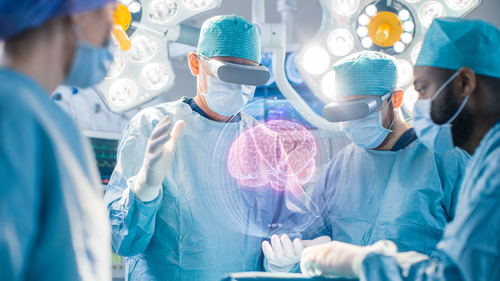Pre-recorded Sessions: From 4 December 2020 | Live Sessions: 10 – 13 December 2020
4 – 13 December 2020
Pre-recorded Sessions: From 4 December 2020 | Live Sessions: 10 – 13 December 2020
4 – 13 December 2020
#SIGGRAPHAsia | #SIGGRAPHAsia2020
#SIGGRAPHAsia | #SIGGRAPHAsia2020











Lecturer(s):
Joaquim A. Jorge, INESC-ID, Portugal
Pedro Filipe Campos, University of Madeira, Larsys, Portugal
Daniel Simões Lopes, INESC-ID/U Lisboa, Portugal
Nuno Figueiredo, Champalimaud Foundation, Univ Lisboa, Portugal
Description: The growing interest of Augmented Reality (AR) together with the renaissance of Virtual Reality (VR) has opened new approaches and techniques on how professionals interact with medical imagery, plan, train and perform surgeries and also help people with special needs in Rehabilitation tasks. Indeed, many medical specialties already rely on 2D and 3D image data for diagnosis, surgical planning, surgical navigation, medical education or patient-clinician communication. However, the vast majority of current medical interfaces and interaction techniques continue unchanged, while the most innovative solutions have not unleashed the full potential of VR and AR. This is probably because extending conventional workstations to accommodate VR and AR interaction paradigms is not free of challenges. Notably, VR and AR-based workstations, besides having to render complex anatomical data in interactive frame rates, must promote proper anatomical insight, boost visual memory through seamless visual collaboration between professionals, free interaction from being seated at a desk (e.g., using mouse and keyboard) to adopt nonstationary postures and freely walk within a workspace, and must also support a fluid exchange of image data and 3D models as this fosters interesting discussions to solve clinical cases. Moreover, VR and AR-based techniques must also be designed according to good human-computer interaction principles since it is well known that medical professionals can be resistant to changes in their workflow. In this course, we will survey recent approaches to healthcare, including diagnosis, surgical training, planning, and followup as well as AR/MR/VR tools for patient rehabilitation. We discuss challenges, techniques, and principles in applying Extended Reality in these contexts and outline opportunities for future research.
